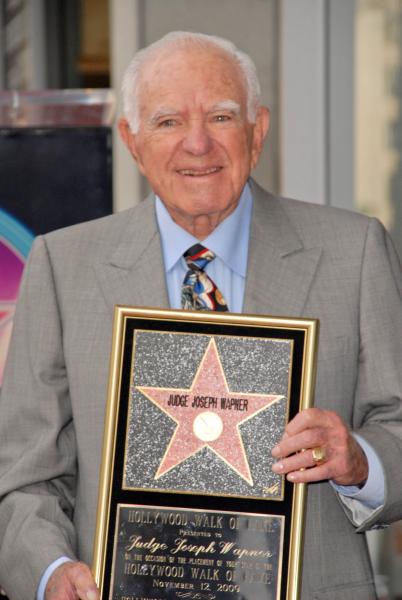Judge Joseph Wapner of “People’s Court” fame died this weekend at 97. Arguably the nation’s first reality star, his passing was confirmed by his son, David Wapner, to the Associated Press. It was reported the Judge died in his sleep at home subsequent to a recent hospitalization a week prior for “breathing problems.”
His son also revealed he was under home hospice care. No matter the age, such a loss is a painful event. We at ACSH wish his loved ones much peace during this difficult time.
By these declarations, it appears there were underlying circumstances leading to this unfortunate eventuality.
We often hear on the news or even in daily conversation that a person died in his or her sleep. This concept is routinely conflated with the notion a death was by “old age” or “debility” as was once the name centuries ago. During those eras or when a cause of death does or doesn’t remain elusive, the term “natural causes” often abounds in the elderly.
These concepts tend to be at issue in the geriatric set, in particular, often perpetuating a false perception. “Old Age” (and the like) is not the direct trigger for death. The aging process itself along with an individual’s underlying medical conditions in parallel with the consequences of a life well-lived act in unison to precipitate a cascade of events. Often slow-going in decline for some. Stabilizing or more rapid for others.
It is not uncommon for an older person to struggle to rebound after a hip fracture (aka breaking a hip), for instance. Often, this limitation in mobility causes diminished activity. The less active and more sedentary, the more at risk for pneumonias, blood clots and other adverse effects. Things a younger person might more precipitously rebound from given their vast reserves. These are not as present as we age. It is the complication of or lack of recovery from these that elicit death in the elderly.
Basically, avoiding injury at a certain age often proves to be a very influential consideration when addressing longevity.
We know as we age, for one, our immunity is impaired and weakened. Fighting infection can be a bigger deal. This is so in the very young, hence, why both populations are deemed higher risk and therefore prioritized for preventive measures like receiving the influenza vaccine. Again, the significance is highly dependent on the person. The individual is the ever-important variable. His genetics. His current medical status. His delay in seeking and accessing good medical care and appropriate interventions. His level of activity and independence.
We need not look further than the recent hospitalizations of former President George H.W. Bush at 93 and wife Barbara Bush. He was admitted to intensive care requiring transient intubation for a severe pneumonia. She for bronchitis. Thankfully, both did well and were discharged from the hospital. To learn more about ways to be proactive in disease prevention, read: President George H. W. Bush In ICU, Wife Barbara In Same Hospital.
Avoiding injury is of critical import in this demographic especially given that falls are amongst the top five leading causes of death. Recently, the famous singer-songwriter Leonard Cohen, as per his manager Robert B. Kory’s statement, “died during his sleep following a fall in the middle of the night on November 7th. The death was sudden, unexpected, and peaceful.” If interested in learning about the various leading preventable causes of death, then review Leonard Cohen's Death By Falling Among Top 5 Leading Causes.
Head injuries notoriously can prove fatal and can mimic a “death in her sleep” narrative. When a person is unsteady due to other infirmities or accidentally falls, the highest real estate to protect is the brain. Certain bleeds in this location don’t immediately show signs, for example. There are types that involve an initial period of lucidity before a rapid decline. The expanding bleed itself can diminish alertness and consciousness ultimately leading to coma or death. We recall the tragic, premature death of actress Natasha Richardson after an event on a ski slope and underscore the importance of seeking medical evaluation with any head trauma regardless of age.
Intervening surgically in an older person with a brain bleed can be especially precarious given other compounding factors like chronic heart disease or other illnesses. Like anyone, risks and benefits need to be weighed heavily. But, identifying the source and that there is even a problem to begin with is crucial to survival.
Cardiac arrhythmias, lack of oxygen from seizures, progressive and advanced terminal disease, and medication interactions can all be culprits in fatality. When there is no sign of foul play, meaningful determinations can usually be made when rendering a cause of death in those of advanced age. The history often provides many answers. When these events like “dying in your sleep” occur in a young person suddenly and unexpectedly, greater investigation will typically be required. To learn more about causes of sudden death, review Hollywood’s Top 5 Medical Falsehoods.
“Natural causes” or “dying in one’s sleep” or “old age” though not technically accurate in describing the manner of one’s death, do reflect a catch-all semantic unlikely to leave our daily vernacular. And, that’s totally okay. Just appreciate the nuance.




